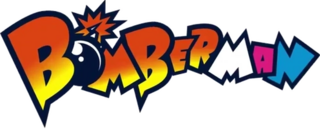
Bomberman is a video game franchise created by Shinichi Nakamoto and Shigeki Fujiwara, originally developed by Hudson Soft and currently owned by Konami. The original game, also known as Bakudan Otoko (爆弾男), was released in Japan in July 1983 and has since spawned multiple sequels and spin-offs released on numerous platforms, as well as several anime and manga adaptations.
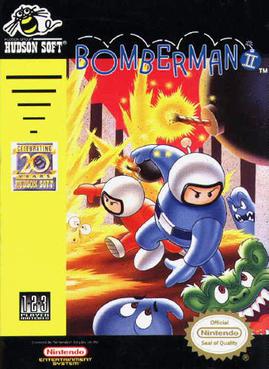
Bomberman II, released in Europe and Australia as Dynablaster, is a maze video game developed and published by Hudson Soft for the Nintendo Entertainment System originally in Japan and Europe in 1991 and later in North America in February 1993.
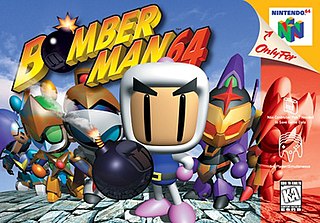
Bomberman 64 is a video game developed and published by Hudson Soft in Japan, and published by Nintendo in North America and Europe for the Nintendo 64. The game was released in Europe and North America in November and December 1997, respectively. While the game never saw a release on the Wii's Virtual Console service, it was released on the Wii U Virtual Console in both Europe and North America in March 2017 followed by Japan in June 2017.

Bomberman Generation is a 2002 video game released for the GameCube. It was followed up by Bomberman Jetters.

Bomberman is a maze video game developed and published by Hudson Soft. The original home computer game Bomber Man was released in July 1983 for the NEC PC-8801, NEC PC-6001 mkII, Fujitsu FM-7, Sharp MZ-700, Sharp MZ-2000, Sharp X1 and MSX in Japan, and a graphically modified version for the MSX and ZX Spectrum in Europe as Eric and the Floaters. A sequel, 3-D Bomberman, was produced. In 1985, Bomberman was released for the Nintendo Entertainment System. It spawned the Bomberman series with many installments building on its basic gameplay.

Bomberman Jetters is an action game for the Game Boy Advance, GameCube and PlayStation 2, and part of Hudson Soft's Bomberman series. The game builds on the gameplay style established in the previous Bomberman series entry, 2002's Bomberman Generation, and features characters and settings from the 2002 anime series Bomberman Jetters. The GameCube version utilizes cel-shaded graphics similar to those of Bomberman Generation, while the PlayStation 2 version does not.
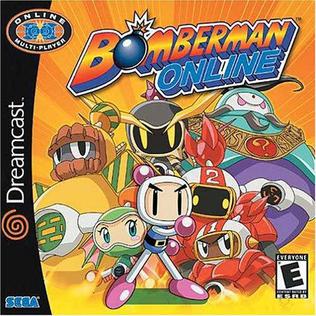
Bomberman Online is a multiplayer video game developed for the Dreamcast console platform. The game is part of the Bomberman franchise and includes various multiplayer game modes. The game's online servers were shut down in 2003, restricting players to offline-only multiplayer modes.

Super Bomberman 2 is a video game developed by Produce! and Hudson Soft and released on the Super Nintendo Entertainment System. It was released in Japan on April 28, 1994, in North America later the same year, and in Europe on February 23, 1995.

Bomberman: Panic Bomber is a 1994 puzzle video game developed and published by Hudson Soft for the PC Engine on December 22, 1994. It was later released for the Neo Geo, Super Famicom, Sharp X68000, FM Towns, NEC PC-9821, Virtual Boy, and PlayStation Portable. It saw a re-release for the Wii and Wii U's Virtual Console services. Panic Bomber is a falling block game with the players' goal being to clear matching blocks using bombs, ensuring that their screen does not fill and that their opponents' screens do. It received mixed to positive reception, identified as a decent game by multiple critics. It has been compared to the falling block puzzle game Tetris. The Virtual Boy version received a mixed reception for its handling of the platform's visual capabilities.

Bomberman Tournament is a game in the Bomberman series for the GBA. The game contains a multiplayer battle mode between linked Game Boy Advances. The player and up to three others can compete in any of the game's eight multiplayer battle arenas, each of which has its own unique gameplay twist.

Atomic Bomberman is a game by Interplay Productions for the PC that was released in 1997. It was the first original Bomberman game to be developed for Windows, and the second game of the series made for the PC, following Dynablaster.

RoboWarrior, known in Japan as Bomber King, is an action puzzle video game developed by Hudson Soft, and co-developed by Aicom, making it their first NES game they worked on, and published by Jaleco for the Nintendo Entertainment System and the MSX.
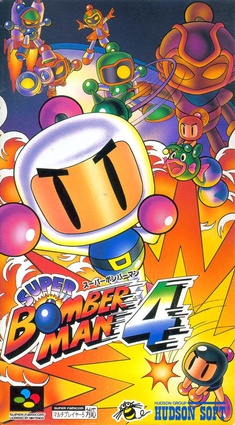
Super Bomberman 4 is a 1 or 2 player action-party video game, developed by Produce and published by Hudson Soft for the Super Famicom, released on April 26, 1996, in Japan. Part of the Bomberman franchise, it is the fourth installment of the Super Bomberman series.
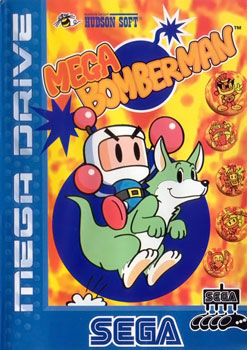
Bomberman '94 is a video game from the Bomberman series which was developed and published by Hudson Soft for the PC Engine and released on December 10, 1993, in Japan. It was later re-developed by Westone and re-published by Sega as Mega Bomberman on the Sega Mega Drive/Genesis in 1994 in other areas. The PC Engine Bomberman '94 was later released outside Japan through the Virtual Console and the PlayStation Network.
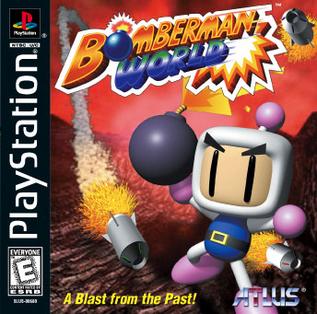
Bomberman World is a maze action video game released in 1998 by Hudson Soft for the PlayStation. It is part of the Bomberman series. The game was also re-released for PCs in 2002 alongside the TurboGrafx-16 version of Bomberman and Bomberman '93 as part of a compilation disc titled Bomberman Collection.

Bomberman 64 is a Japanese Nintendo 64 game released in 2001. It was the final Nintendo 64 game to be released in Japan. The game features four distinct gameplay modes, each with unique gameplay, based on different games in the Bomberman franchise.

Bomberman, also known as Dyna Blaster in Europe, is an action-maze video game originally developed and published by Hudson Soft for the PC Engine in Japan on 7 December 1990 and later in North America for the TurboGrafx-16 by NEC in 1991. Belonging to the Bomberman franchise, it is a re-imagining of the first game in the series starring White Bomberman on a quest to rescue Lisa, the kidnapped daughter of his inventor Dr. Mitsumori, from the castle of Black Bomberman while defeating evil monsters and villains that work for him. The game was later ported to home computers, each one featuring changes compared to the original version. Conversions for other platforms were in development but never released. The title garnered positive reception from critics since its initial release on the PC Engine/TurboGrafx-16 and later on home computers.
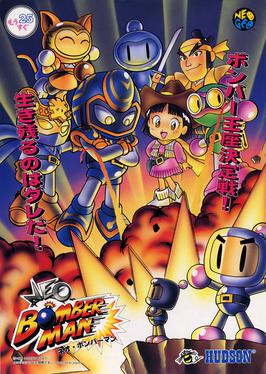
Neo Bomberman is an action-maze arcade video game developed by Produce! and published by Hudson Soft for the Neo Geo MVS on May 1, 1997. It is one of two games in the Bomberman franchise that was released for the Neo Geo platform, the first being Panic Bomber, and the only one to retain its traditional top-down gameplay. It was released for the Neo Geo MVS (arcade) and has not received a home console release to date. It was the last original Bomberman title to be released for arcades until Konami's Bombergirl in 2018.

Bomber Man World is a 1992 video game released by Irem under license from Hudson Soft for arcades. It is part of the Bomberman series. It was the second Bomberman game to be released for arcades, preceded by Bomberman (1991), which was also released by Irem.

Bomberman GB is a video game series created by Hudson Soft for the Game Boy. The first entry was Bomberman GB, released as Wario Blast: Featuring Bomberman! in North America and Europe, later succeeded by Bomberman GB 2, under the name Bomberman GB internationally, and Bomberman GB 3, which was only released in Japan.




















